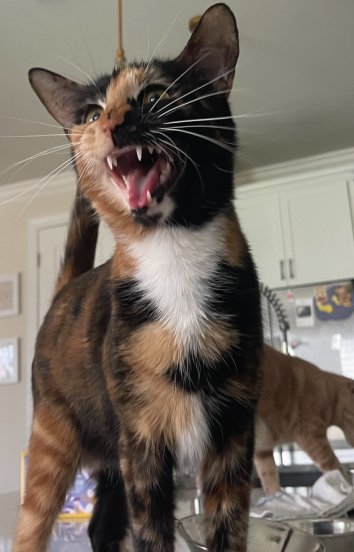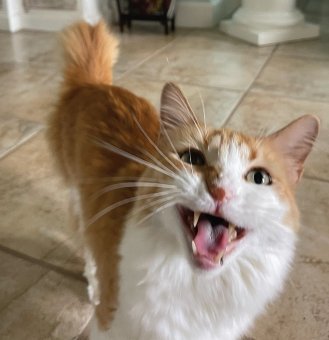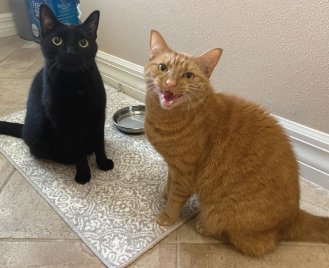Welcome to the purr-fect world of feline linguistics! Cats boast an impressive vocabulary of up to 21 distinct vocalizations, each a note in the symphony of cat communication. It's not just meows and purrs; it's a real language that can be as complex as a human conversation.
Not all cats are born chatterboxes. Some, like the Maine Coons, tend to be part of the quieter breeds, while others, like the Siamese, are the talkative kitties of the feline universe.
Meowing: The signature soundtrack of feline communication! Kittens use it to summon their moms, but in adulthood, it becomes the cat's go-to language for humans. From greetings to playtime requests, expressions of excitement or frustration, to demanding attention, food, or room access – meows are the most popular of the cat communication world.
Purring: In the world of feline communication, there's one sound that reigns supreme – the purr! This sound is typically an indicator that your kitty is in a state of bliss—think lounging in a warm sunbeam or receiving chin scratches while sitting on their human’s lap. Interestingly, cats purr at a frequency between 25-150 Hertz, known to have therapeutic effects on bones and tissues. Beyond contentment, they may purr to self-heal, reduce stress, and even communicate with humans. The unique purring sound originates from the cat's laryngeal muscles rapidly contracting and relaxing.
Trilling: A trill is a high-pitched musical sound made by some cats during specific situations. Cats reserve this delightful sound for greetings and thanking their human admirers, often for treats or affection. They may also use this when communicating to their favorite feline sibling. It's the cat's way of saying, "You're my favorite."
Chirping: Initially, chirping is a mother cat's call to her kittens, adult cats also use chirps to grab attention and share their whereabouts. When faced with tantalizing prey outside the window, a chirp signifies excitement, tinged with a dash of frustration.
Chattering: Have you ever caught your cat silently chattering away? It's not Morse code; it's their voiceless jaw clash, usually reserved for spotting prey out of reach. It's the rhythm of their imaginary hunt.
Growling and Hissing: Growling is a low rumble signaling threats and impending feline fury. Hissing, its dramatic cousin, is the involuntary response to a surprise threat. Both come with a side of fear-inducing body language – arched back, flattened ears, twitching tail, and the classic Halloween cat posture. When the growls and hisses start, heed the cat's message: "Step back, I'm not in the mood!"
Spitting: More intense than a hiss, this explosive burst signals a peak threat situation. It's the cat's way of saying, "Seriously, back off!" – accompanied by a swift, lashing-out movement for added drama.
Yowling and Howling: Imagine a cat's meow on steroids, and you've got yowling – a prolonged, distressed sound. Howling is its shorter cousin. These are the sirens of cat communication, indicating physical or emotional distress. Separation anxiety, pain, or just a need for attention – it's their way of belting out their feelings.
Caterwauling: A loud, long whine reserved for unspayed females in heat. Directed at human family members, it's their expression of pain, discomfort, fear, or a blatant demand for attention.
In this enchanting world of feline sounds, any change in frequency, intensity, duration, or pitch is your cat's SOS. A trip to the vet might be in order, and for some, a dash of anxiety or pain meds could be the magical remedy. So, listen closely, fellow cat enthusiasts, for in their symphony of sounds, your furball's story unfolds, one delightful meow at a time!
References




